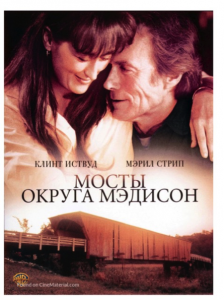by Gregory Orr
Of all the cultural tools used by the United States Information Agency (USIA) to promote public diplomacy, film had a prominent role. For nearly half a century, the film division at USIA produced, distributed, and sponsored films throughout the world. It is estimated that the USIA archive included nearly 18,000 films distributed to over 150 nations in dozens of languages. They ranged widely in style (documentary, newsreel, animation, educational, and even fiction) and subject matter (social issues, biography, history, the arts, the environment, daily life in America, and sports.)
It was not surprising when President Ronald Reagan selected Charles Z Wick, a businessman with ties to the motion picture and tv industry, as the Director of USIA. During his tenure from 1981-1988, Director Wick is most remembered for establishing the ambitious Worldnet Television and Film Service, a 24-hour-a-day cable and satellite channel directed to audiences outside of the United States. As a result, the United States Information Service (USIS) offices overseas had ample film resources to distribute to local schools, libraries and media outlets as part of our cultural diplomacy.
Sometimes though we would receive requests for assistance that required us to expand our “cinematic” universe. In 1995, the USIS office in Moscow where I worked was approached by the Dom Kino (House of Cinema) to show a first-run American film to its membership. The Dom Kino was the Headquarters of the Union of Cinematographers of the Russian Federation and its presentations and screenings were well attended by the film community.
American films had been popular in Russian cinemas for years and they were usually of the superhero, space opera, cops and robbers variety. However, the Dom Kino audience would undoubtedly have higher expectations for this USIS-sponsored screening. So the pressure was on.
By late summer, there were two very different critically lauded films in American cinemas, “Apollo 13” and “The Bridges of Madison County”. One was a rousing story of a near tragedy in space saved by American ingenuity and the other was a modest love story between a photographer and an Italian-American housewife.
My boss, Public Affairs Officer Paul Smith, had recently seen both films on home leave and felt that “Apollo 13” would be a little too patriotic for our Russian audience while the simple pleasures of “The Bridges of Madison County” might have broader appeal. USIS Moscow reached out to Warner Brothers to see if they would provide us with a copy of the film to show this prestigious audience. They agreed, under the stipulation that someone come to London to act as “bodyguard” for the valuable property on its journey from their headquarters to Moscow.
 By chance, I was going to London on a personal holiday so it fell to me to pick up a pristine copy of the film from Warner Brothers to hand carry back to Moscow. Mind you, this was not a videotape or digital disc but 60 lbs of film reels that had to be carted on to the plane as my “hand luggage”. While I seriously didn’t worry that someone would try to make off with the rather unwieldy baggage at my feet, I nevertheless kept a close eye on it on the plane and upon arrival at the sometimes-chaotic Sheremetova airport, where I was met by an embassy driver.
By chance, I was going to London on a personal holiday so it fell to me to pick up a pristine copy of the film from Warner Brothers to hand carry back to Moscow. Mind you, this was not a videotape or digital disc but 60 lbs of film reels that had to be carted on to the plane as my “hand luggage”. While I seriously didn’t worry that someone would try to make off with the rather unwieldy baggage at my feet, I nevertheless kept a close eye on it on the plane and upon arrival at the sometimes-chaotic Sheremetova airport, where I was met by an embassy driver.
Once the film was safely in the hands of the projectionists at the Dom Kino, our only task left was to monitor the screening hall to make sure no unauthorized filming of the movie was taking place. (Russians at that time had a very liberal attitude towards copyrighted material and we had promised Warner Brothers that we would do everything in our power to protect the movie.)
The film was a huge success, overcoming a rather hasty attempt at simultaneous translation from English into Russian via headsets worn by the audience. Many in the audience said they didn’t know America made such small, character-driven films. They loved the rural setting, the quiet romance, and the bittersweet outcome—not a typical Hollywood ending.
And when they talked about the cast, they all knew Clint Eastwood but many were curious about the talented actress who portrayed Francesca. “Who was she?” they wanted to know. You mean Meryl Streep? The star of “Kramer vs. Kramer”, “The French Lieutenant’s Woman”, “Out of Africa”, “Sophie’s Choice”, “Silkwood”? It may be that they didn’t recognize this chameleon-like actress who transforms herself in each role she inhabits. More likely is the fact that her films never enjoyed much circulation in Russia, crowded out by more bombastic Hollywood fare.
If our film showing achieved anything, it introduced Russians to another, quieter side of American cinema and to performers worthy of international attention.![]()

Gregory John Orr began his international career teaching English in Kyoto, Japan and in Benin, West Africa with the Peace Corps. He broadened his African experience, first as Fulbright doctoral researcher in Malawi and then as a USIA teacher training consultant in the Cape Verde Islands and South Africa. When he joined the foreign service as an English teaching specialist for USIA in 1987, he reoriented his career focus to Central and Eastern Europe with postings in Budapest, Moscow, Kiev, and Bratislava. In retirement he moved to SW France for a decade before returning to live in Washington, DC.
